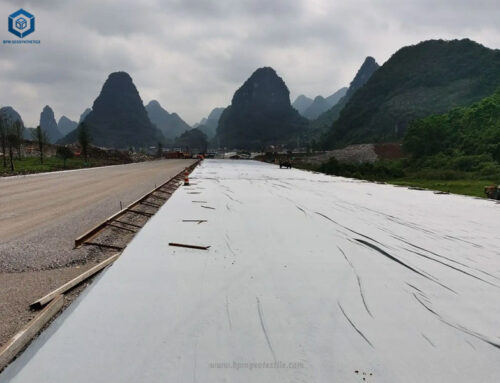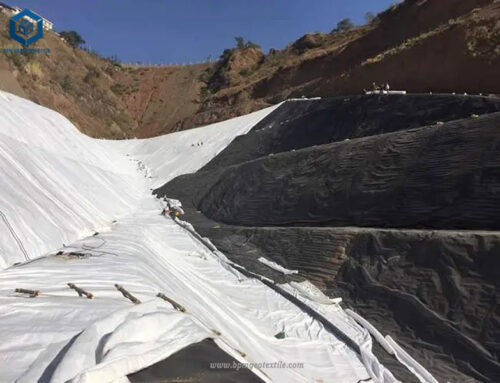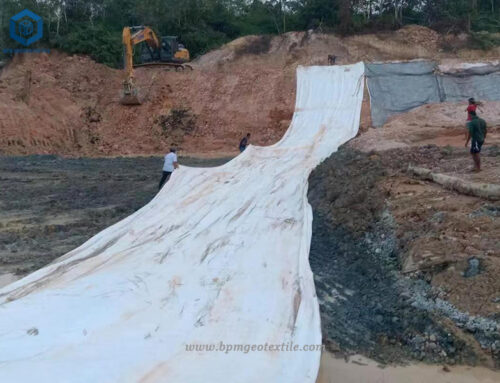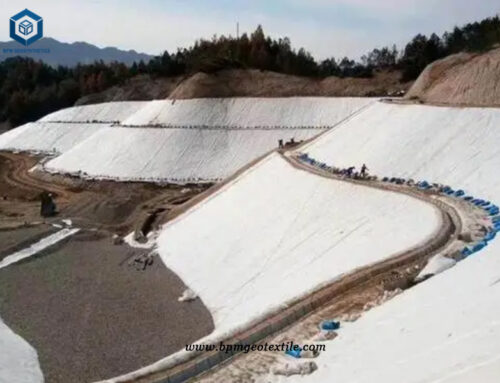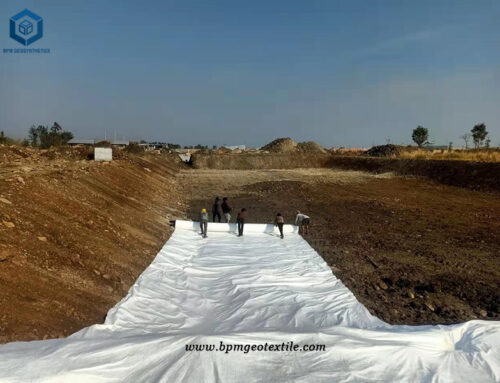Filament geotextile filter fabric has good mechanical function, good water permeability, anti-corrosion, anti-aging, and has the functions of isolation, anti-filtration, drainage, protection, stabilization, reinforcement, etc. Damage, creep is small, and the original function can still be maintained under long-term load. The characteristics of Filament geotextile filter fabric can replace traditional engineering materials and construction methods, making construction safer, contributing to environmental protection, and solving basic problems in engineering construction more economically, effectively and lastingly.
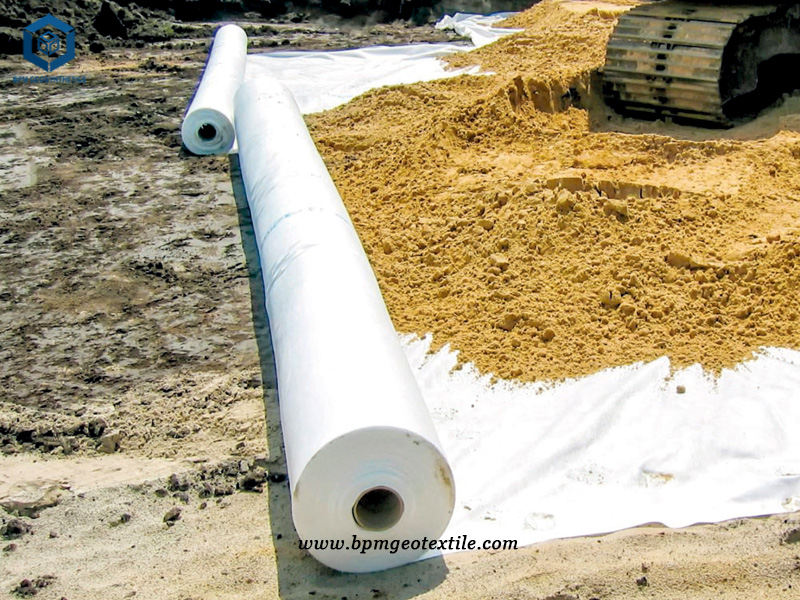
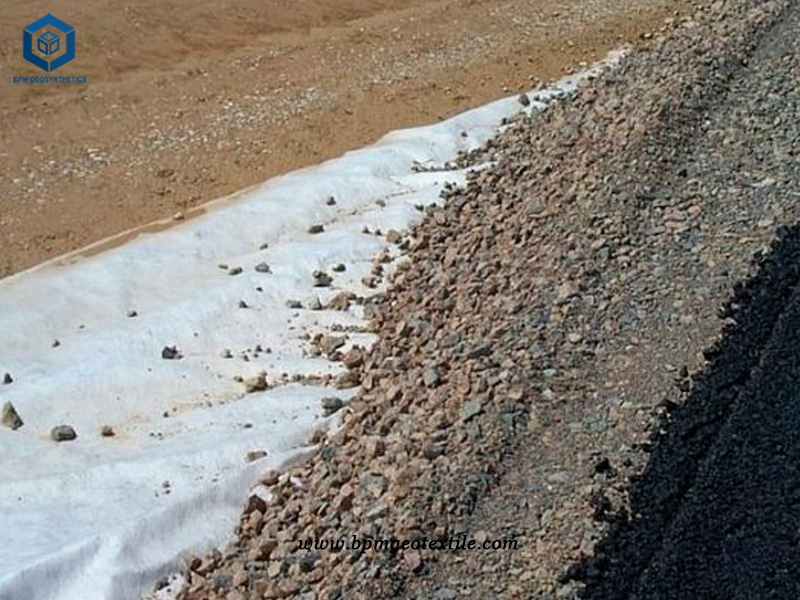
Case Study Of Filament Geotextile Filter Fabric for Road Construction
The road construction of the Thai customer needs to pass through a fish pond, and the foundation of the silt dike and weir around the fish pond will be treated. The main principle of geotextiles to reduce settlement is that on the one hand, because of the reduction of the effective load in the center of the embankment, it can also reduce the lateral displacement and lateral extrusion. The filament geotextile filter fabric and the bottom sand layer serve as a horizontal drainage channel, which accelerates the drainage and consolidation of soft soil. The Thai customer ordered 52,000 square meters of PET non-woven geotextile, which can not only solve the problem of road foundation settlement, but also reduce the burden on the customer’s construction, speed up the progress of road construction, and reduce construction costs.
Specification Of Filament Geotextile Filter Fabric for Road Construction in Thailand
- Roll of Size – 5.8m*100m
- Geotextile: – PET Nonwoven Geotextile 400g
- Total Quantity – 52000 square meters
The main role of reinforced filment geotextiles in the foundation treatment of reclamation projects
1. Play the role of isolation and reduce the settlement of the embankment body.
In Thailand, the foundations of highway engineering consist of high-plastic clay. Without the use of geotextiles for isolation, the silty soil on the foundation surface tends to migrate upward through the voids in the stone layer, leading to embankment settlement. Additionally, in fish pond foundations, the permeable nature of the soil allows the soft soil to rise above the surface during tidal ebb and flow, causing erosion and further compromising the stability of the foundation and embankment. However, by incorporating reinforced geotextile, the “slurry” effect of the plastic foundation soil can be effectively prevented, reducing embankment settlement and protecting the stability of the structure.
2. Strengthen the integrity of the foundation and improve the bearing capacity of the foundation.
The use of geotextiles serves two purposes. Firstly, it enhances the confinement effect on the foundation soil. The surface layer of the fish pond tidal flat foundation consists of fluid-plastic soft silt.
Secondly, geotextiles help in homogenizing the foundation stress. Once geotextiles are placed, the additional stress on the foundation is redistributed, resulting in a more uniform distribution of stress.
3. Strengthen the overall anti-skid stability of the embankment body.
The overall anti-slip stability of the embankment body is the controlling factor in the design of the fishpond highway engineering, which is directly related to the size of the highway section and the engineering investment. After the geotextile is laid, the anti-sliding force will be effectively improved, the overall anti-sliding stability of the embankment body will be improved, the section of the seawall will be effectively reduced, and the project cost will be reduced.
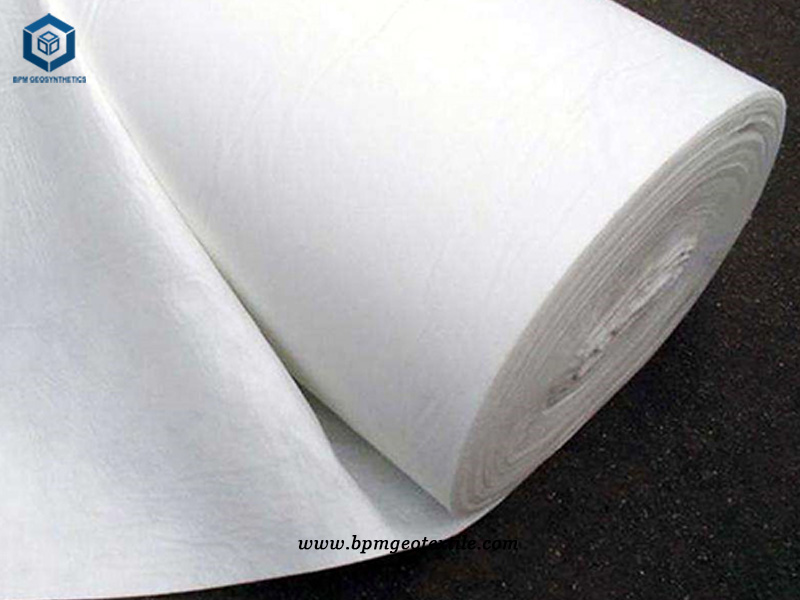
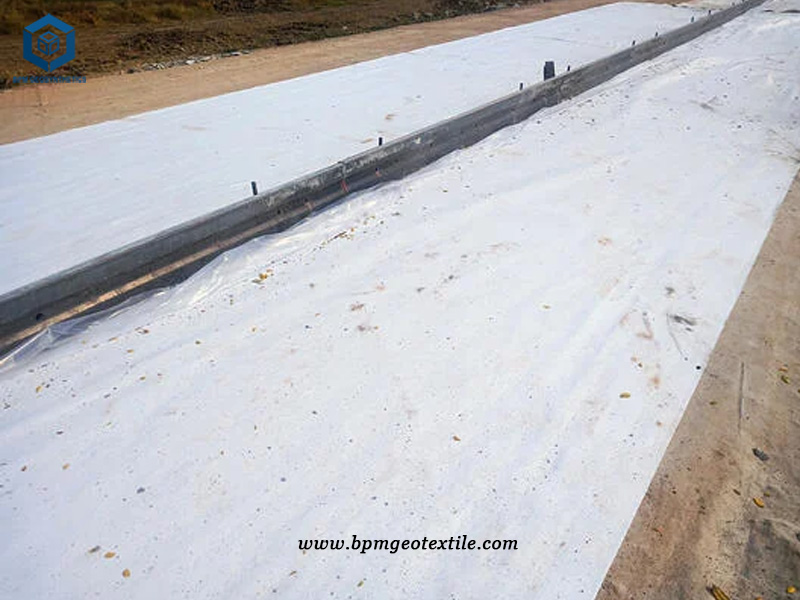
Laying process of polyester filament geotextile filter fabric
1. Storage, transportation and handling of geotextiles
Geotextile rolls should be protected from damage before installation and deployment. Geotextile rolls should be stacked in a place where there is no water accumulation, and the height of the pile should not exceed the height of four rolls, and the identification sheet of the roll can be seen.
2. The laying method of geotextile filter fabric
1) It is rolled by hand; the cloth surface should be flat, and the deformation allowance should be properly reserved.
2) The installation of filament or short filament geotextiles usually uses several methods of lap jointing, sewing and welding. The width of stitching and welding is generally more than 0.1m, and the width of lap joint is generally more than 0.2M. Geotextiles that may be exposed for a long time should be welded or sewn.
3) Sewing of geotextiles, all stitching must be carried out continuously (for example, point stitching is not allowed). Geotextiles must overlap at least 150mm before overlapping. The minimum stitching distance is at least 25mm from the selvedge (the exposed edge of the material).
About BPM
BPM manufactures and wholesales many types of effective and states of the art geotextile, geomembrane, and other geosynthetics to over 36 countries. BPM geosynthetic products are widely used across a variety of industries including waste containment, water containment, aquaculture, industrial project, energy project and mining projects, etc. BPM main customers are from Australia, France, Sweden, UK, Hungary, New Zealand, Poland, Mexico, Ecuador, Brazil, Pakistan, Bangladesh, Thailand, Vietnam, Malaysia, Indonesia, Singapore, Philippines, Sri Lanka, India, UAE, Saudi Arabia, Qatar, Kenya, etc.
BPM is not only manufacturing best quality geosynthetic products but also providing professional design and installation service. OEM, ODM, custom development and fabrication are also available. If you have any questions or inquiries, please fill and submit the following form, we will reply as soon as possible.

